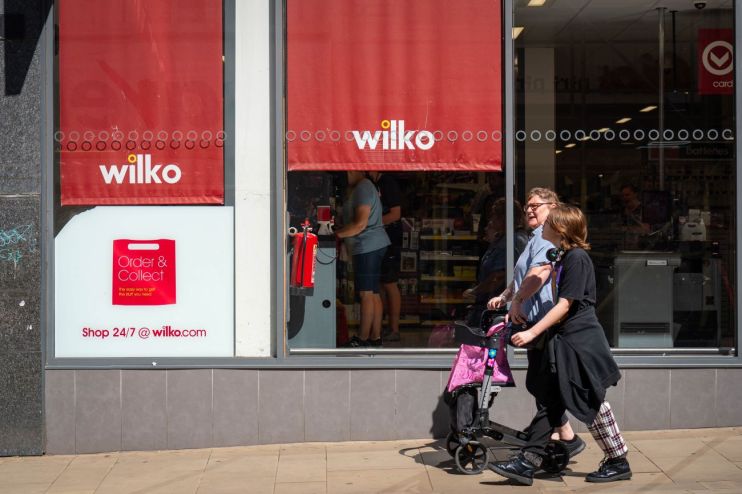RIP Wilko: How another high street chain went to the wall

After more than 90 years on the high street, Wilko and all its 400 stores will vanish by early October.
Its 12,500 staff were hoping that HMV owner Doug Putman would be able to close a rescue deal that would see several hundred stores saved.
But the Canadian entrepreneur abandoned talks with the high street chain’s administrators, PwC, over concerns about the cost of the retailer’s infrastructure.
While Poundland owner Pepco is understood to still be in talks to buy some stores, such a deal would be likely to involve the retailer buying physical spaces to transform into discount stores.
Value store chain B&M also bought 51 Wilko stores in a deal worth £13m. But it is understood that these shops will be converted into more B&M stores.
The Range is reportedly the frontrunner to acquire the Wilko brand and online assets.
Formerly known as Wilkinson Cash Stores, Wilko arrived on the high street in 1930, launched by James Kemsey Wilkinson and his fiancee Mary Cooper in Leicester.
It was loved by consumers for its affordable household goods and its wide range of products including everything from sweets, garden tools and pet food.
When Woolworths closed in the UK in 2009, Wilko largely filled the void in consumers’ hearts for a destination that sold everything.
But a cocktail of dwindling demand for physical stores and competition in the discount market appeared to tip Wilko into administration.
Even when a squeeze on the public’s finances forced shoppers back to the high street in search of cheaper goods, they seemed to favour rivals B&M and Poundland.
It also emerged that the family paid out a total of £77m to themselves and former shareholders of the retail chain in the decade leading up to its collapse. Even as losses plunged to more than £35m last year a £3m dividend was paid, according to a report in This is Money.
The company had tried its best to stay afloat — it tapped investor Hilco for £40m over the past year.
Its bidding process was dramatic with private equity firm M2 Capital — a former frontrunner who wanted all 400 sites — forced to pull out of the race after it failed to show it sufficient funds to buy the brand.
“The worst possible outcome for Wilko staff has now been realised, with Putman’s bid falling through,” Jonathan De Mello, founder of consultant JDM Retail, told City A.M.
“The bid was ill fated from the outset, with Putman initially bidding for 350 stores — way too many given a large number of these will have contributed little/nothing to overall business profitability.”
UK high streets will mourn the loss of Wilko as it joins a number of once seemingly indestructible companies in the retail graveyard.
Just eight months ago, Paperchase collapsed into administration following years of plummeting sales. Its brand and intellectual property were snapped up by Tesco.
Before that, iconic brands such as Topshop and Debenhams disappeared from town centres and shopping outlets as the pandemic acted as a final nail in the coffin for some retailers that had already began to show signs of being outpaced by online shopping.
“It’s clear there needs to be a big rethink about how to revitalise our high streets, which were once the beating hearts of communities. It’s set to be increasingly tough going as lockdown savings are further whittled away and the impact of higher rates on borrowing costs are felt more widely,” said Susannah Streeter, head of money and markets at funds supermarket Hargreaves Lansdown.
“It’s an increasingly competitive on the value retail landscape, as the big grocers compete with discount chains for business. In this climate a good location, the right product mix and a razor sharp focus on shoppers’ desires will be all-important — which are all factors Wilko appeared to lose sight of, prompting its demise.’’